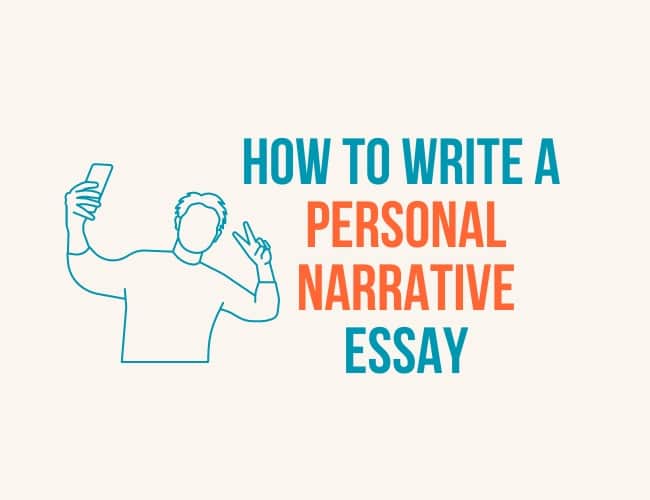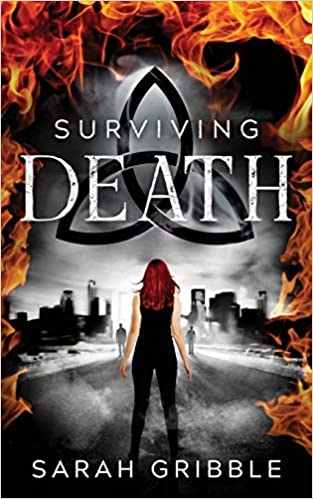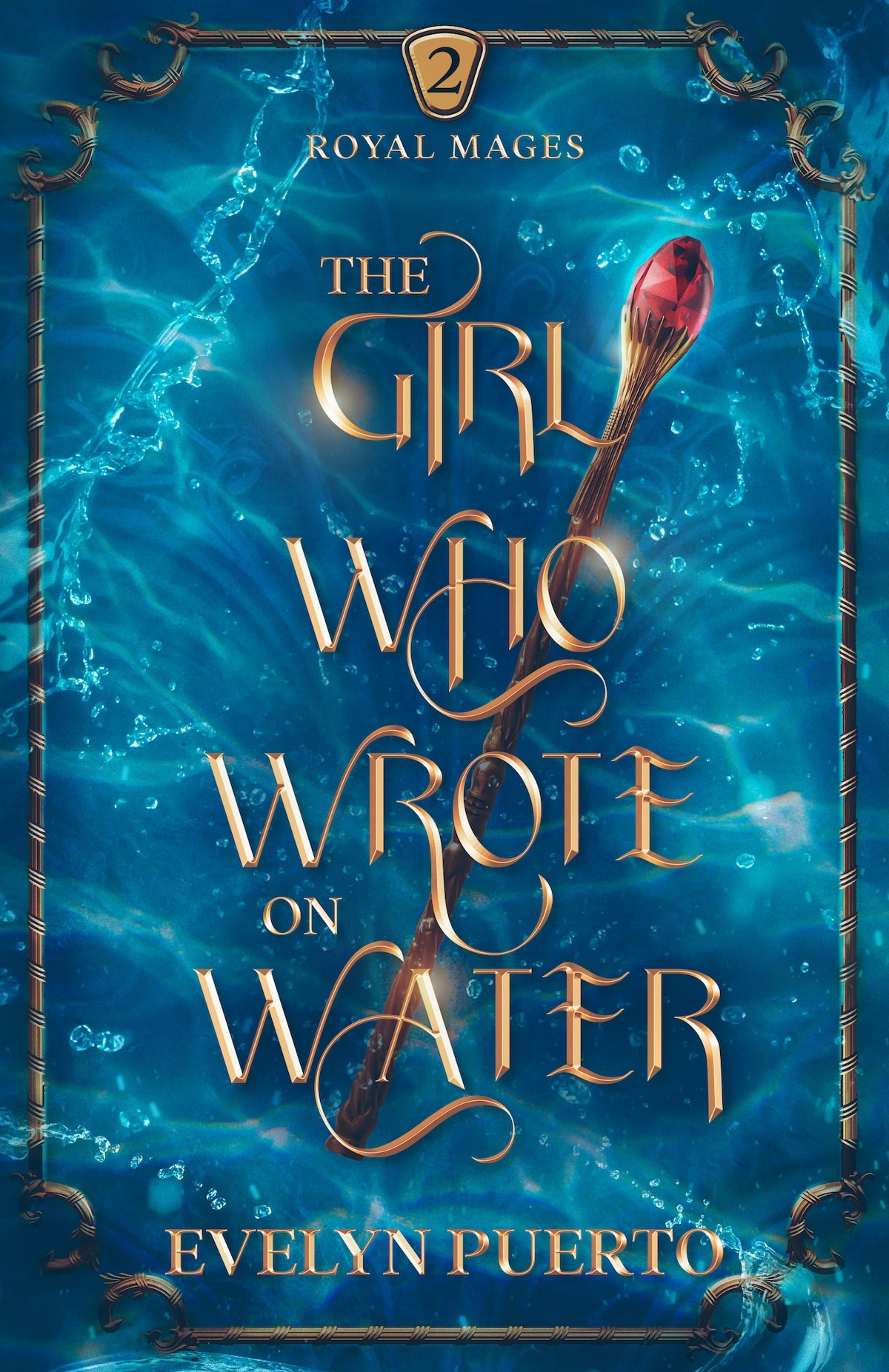Learning how to write a personal narrative essay is a core skill in most middle and high school writing classes, but narrative essays are great practice for so much more! If you've ever wanted to nail an assignment, an interview, or just be a more interesting person, this practice is for you!

As an award-winning teacher, I always begin my courses with a personal narrative essay, whether I'm teaching beginning composition to college freshmen or English to eighth graders.
Why? Because you know the most about yourself and your own experience. Most students find they don't know what to write about when they get assigned an essay. A personal narrative doesn't require any research.
Plus, learning to tell a story about yourself and your experiences is so valuable for more than school assignments. Let's break down this type of essay, so you can learn to write a terrific one.
What is a personal narrative essay?
At the most basic level, this kind of creative writing essay recounts a personal experience with a point or lesson. it is not your entire life story, but a small slice of life that was significant.
The goal of a personal narrative is to entertain and sometimes to share wisdom or offer tribute to someone who's made a significant impact on you.
These essays are often compelling narratives of human experience, but they don't have to be about a flashy, newsworthy moment. Any life event or experience that changed you or helped you understand yourself or the world in a new way can be a terrific topic!
Why learn to write a personal narrative?
The first question I always address when I assign this type of essay is why it's even something you need to learn. At first glance, students question whether or not learning to write about themselves really matters. But it does!
Sure, you want to do well on your school assignments, and it's helpful to know that college essay applications require one or more types of personal essay for admissions.
But beyond your educational goals, learning to tell a focused story about yourself will serve you well in cover letters, interviews, and even an author biography.
Additionally, the personal narrative essay is a staple of memoir writing. If you're hoping to write a memoir, a shorter essay is perfect practice for the type of storytelling skills you need to produce a book length memoir. (And it's the type of writing you would likely produce to promote a memoir once your book is published!)
What are the key elements of a personal essay?
I tell students you need a story from your life that recounts a meaningful experience. It will be a personal experience with one central idea.
You'll likely need all the elements of good storytelling, like a main character (that will be you!) with a goal, conflict, action, a crisis, and a choice or epiphany that results in change. You'll want to use vivid details, a setting, and some dialogue when appropriate.
So here's your (very short!) personal narrative checklist:
a story from your life (think one scene or one focused experience)
the one sentence lesson or wisdom you learned from that experience
If you need help figuring out a story or deciding which one to choose, let's discuss what makes for a great essay topic.
How to choose a personal narrative topic
Many students don't feel they have anything to write about. They claim to have a boring life and can't possibly have lived anything worth an entire essay.
They're wrong.
Your life is worth writing about because you're you. No one else has had the exact same experience you have–not even if you grew up in the same household.
No one has your voice. And only you can articulate what made an encounter life-altering.
Sometimes you will get a list of narrative essay topics to choose from. Other times you have to develop your own from a life event or life lesson. But either way, you can create a short list of ideas based on the moments that matter most for you. Here are some ideas to get you started:
Tell about a moment that left a mark. It can be a physical mark, like a scar or an emotional mark—positive or negative.
Think about the activity you love most. Make a list of the three most memorable moments doing that activity (could be when you first started, a time you were successful or failed, etc.)
When was a time you won or lost (or felt you did), but the experience was as gratifying as the outcome?
Whatever you choose, make it something that you care about that showcases your personality, voice, or strengths. For a full set of possible personal narrative writing prompts, check out our article here.
How to start a personal narrative
Once you have an idea about the story you want to tell, along with the statement of what it meant to you (the lesson or wisdom you learned), you're ready to begin writing.
Some assignments will ask you to write an introduction. If they require it, then write one. It might start with something related to the prompt or the lesson you learned.
For example, if the prompt is “Write a personal narrative about a favorite childhood memory,” you can use words from the prompt to begin your essay. “One of my favorite childhood memories happened in [time and setting] when I learned about the [hint at lesson].”
I prefer to jump in with the story and grab the reader from the first line. In this case, it will begin more like a story, where your first job is to show us a character in a setting with a problem.
The wind whipped my coat open on the middle school activity field. It was January and if the group of kids swinging on the soccer goal post was any indication, no teachers were on duty yet.
“Come play with us on the goal!,” my friend Katie shouted, as she lifted another student to grab the bar.
Notice how an opening like this is straightforward. We know where we are (middle school activity field in winter)and what the initial problem is (friends inviting me to swing on a goal that's likely against the rules).
How to organize a personal narrative essay in 8 steps
When you tell the story, you can use a simple structure to guide the writing and then finish with the lesson. Here are eight steps to guide you:
- Begin with a character (that's you!) in a setting with a problem.
- Expand by helping us see who else is there and why (use sensory details here!).
- Then show us how you try (and possibly fail) to solve the problem or reach the goal.
- Repeat the try/fail cycle as needed, and remember to tell the story using dialogue where appropriate and details to make the scene vivid to readers.
- Build to a crisis point–the moment when a decision is presented (think about what you stand to gain and lose and the cost of either choice).
- The climax is the choice or high point–show what you chose or what happened.
- The denouement is what happened as a result of your choice in the climax.
- Finish by using a few sentences to explain the significance of the experience.
How to end a personal essay
You don't have to summarize the story or repeat the lesson over and over as you finish. Connect the story to the lesson or epiphany or significance, then turn toward the purpose of the essay.
Let's say you wrote about a person who inspired you–maybe a coach from your soccer team who stayed after one game to show you how to do something you'd failed at over and over. You could close your essay with a sentence or two about what the coach taught and why it still matters today.
Coach Wall taught me so much more than dribbling that day. She taught me what it meant to persevere and showed me that failure didn't have to be final. As I approach new situations that feel overwhelming at first today, I often think back to Coach Wall and that phrase she taught me: “It's hard because it's new. Keep at it.”
Write your own personal essay
Whether you're writing for school, family, or personal fun, practicing a personal narrative is valuable storytelling practice. These are the stories our parents and grandparents tell us around the table. They are the stories we tell each other as friends.
Learn to tell a great personal story and enjoy the connections you make.
What are your best tips for personal narrative? Share in the comments.
PRACTICE
Set the timer for fifteen minutes. Choose one of the prompts above and collect your list of ideas, including a story and lesson for each. With the time left, start writing one of the stories.
When finished, share in the Pro Practice Workshop and leave feedback for a few other writers.
Sue Weems is a writer, teacher, and traveler with an advanced degree in (mostly fictional) revenge. When she’s not rationalizing her love for parentheses (and dramatic asides), she follows a sailor around the globe with their four children, two dogs, and an impossibly tall stack of books to read. You can read more of her writing tips on her website.




0 Comments